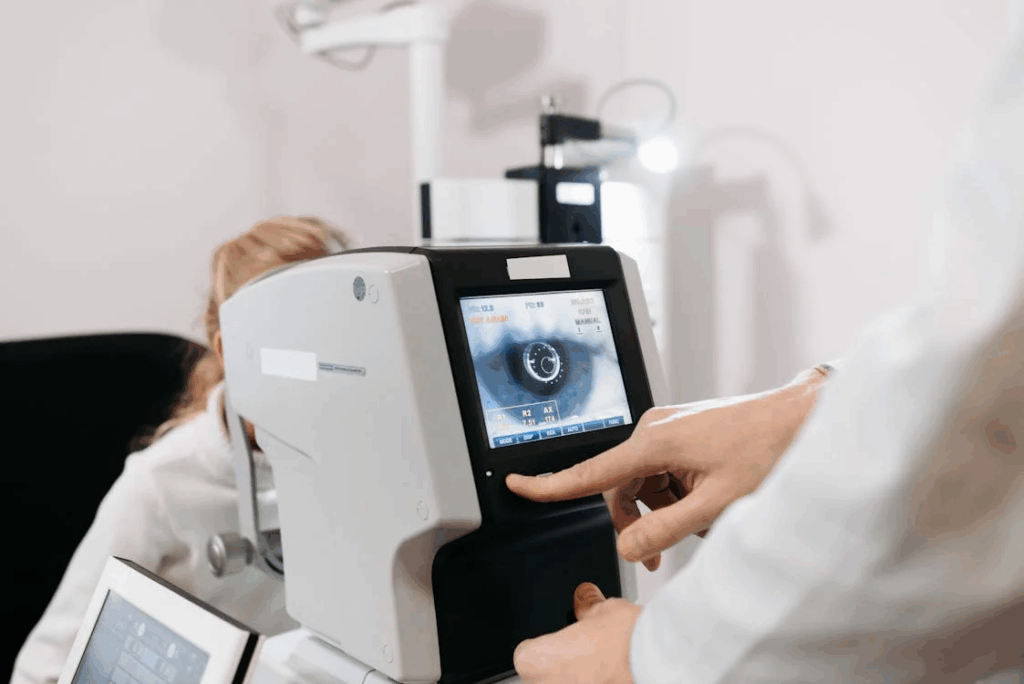There has been a significant increase in the popularity of weight loss medications globally. Drugs and injections such as Ozempic and Wegovy have become favorited tools for treating and managing obesity and diabetes. These drugs have helped millions in weight loss and controlling blood sugar levels.
However, a new study has discovered semaglutide and tirzepadite, the active ingredients in Ozempic and Wegovy respectively, may yield severe side effects. As their popularity soars, scientists are warning users about sudden but rare, sometimes permanent, vision loss called non-arteritic anterior ischemic optic neuropathy (NAION). This phenomenon is now being called “Ozempic Blindness”.
What Is ‘Ozempic Blindness’?

Ozempic Blindness refers to a group of vision-related issues, including sudden blindness. This has been linked in recent studies to the use of GLP-1 receptor agonists. GLP-1 receptor agonists is a class of medications such as Ozempic (semaglutide) and similar medications. These drugs mimic a protein in the body called glucagon-like peptide 1 (GLP-1), a gut hormone responsible for regulating appetite and blood sugar levels. Tirzepatide belongs to a class of medications known as glucose-dependent insulinotropic polypeptide (GIP) receptor agonists. Products like Wegovy utilize it to regulate both blood sugar levels and appetite.
The most concerning condition associated with these drugs is non-arteritic anterior ischemic optic neuropathy (NAION), sometimes described as an “eye stroke.” Sudden restriction of blood flow to the optic nerve causes NAION, which leads to rapid and often irreversible vision loss, typically in one eye. Researchers have also documented cases of other severe eye issues, such as bilateral papillitis (swelling of the optic nerve) and paracentral acute middle maculopathy (a retinal condition causing vision loss).
The Research Behind the Risk

A study published in JAMA Ophthalmology analyzed the medical records of over 16,000 patients and found that semaglutide increased the likelihood of developing NAION by four times in people with diabetes compared to those who did not take the drug. Researchers also noted that the absolute risk remains low; NAION affects about 10 out of every 100,000 people in the general population. However, scientists note the relative increase in risk among Ozempic users is significant enough to warrant caution and further investigation.
Read More: Ozempic May Pose a Risk for Cancer Patients During Treatment, Study Shows
How Does Ozempic Blindness Happen?
The exact mechanism behind Ozempic Blindness is not fully understood. Experts theorize that the rapid correction of high blood sugar (hyperglycemia) in patients starting these medications could play a role. Sudden changes in blood sugar levels may disrupt blood flow to the optic nerve or exacerbate other vascular issues, triggering NAION or other vision problems.
Dr. Joseph Rizzo, director of Neuro-Ophthalmology at Mass Eye and Ear and a professor at Harvard Medical School, emphasized that while these drugs offer substantial benefits, patients and physicians should discuss NAION as a potential risk before starting treatment.
Other Eye Issues Linked to Ozempic
Researchers have linked medications like Ozempic to several instances of eye problems beyond just NAION. These include instances of blurred vision, often temporary and often due to the rapid fluctuations in blood glucose levels. This is especially prominent in older adults whose eyes adjust more slowly.
Dry eye syndrome is a common side effect of these medications, further exacerbated by dehydration. Some evidence suggests that people with longstanding diabetic retinopathy might experience a worsening of their condition following rapid changes in blood sugar induced by these drugs. Finally, macular edema is characterized by swelling within the central retina, potentially leading to vision changes.
How Common Is Ozempic Blindness?
Despite the alarm raised, Ozempic blindness remains rare. Most experts stress that the vast majority of people taking semaglutide or tirzepatide will never experience severe vision loss. Dr. Mir Ali, a bariatric surgeon, notes that these complications are “so rare” that it’s difficult to pinpoint the exact mechanism or identify who might be at greatest risk. Novo Nordisk, the manufacturer of Ozempic, has stated that no cases of NAION were reported in their clinical trials, and that the overall benefit-risk profile of the drug remains favorable.
What Should Patients Do?
If you are taking Ozempic, Wegovy, or similar weight loss medications, experts recommend remaining vigilant but do not panic. If you notice sudden vision loss, blurred vision, or any other changes in eyesight, stop taking the medication and immediately consult with a physician. Before starting a weight loss injection, talk to your physician about your personal risk factors for eye disease, especially if you have diabetes or a history of eye problems.
Rapid changes in blood sugar or weight may increase the risk of complications. Your doctor can help adjust your medication dose to ensure a gradual, safe transition. As research continues, new recommendations may emerge. Regular check-ins with your healthcare provider are essential to stay up-to-date.
Looking Forward
Ozempic blindness is a rare but serious potential side effect of popular weight loss injections like Ozempic and Wegovy. The risk appears to be highest for people with diabetes or those who experience rapid shifts in blood sugar. While the absolute risk is low, the relative risk increase is enough that both patients and doctors should be aware of the warning signs and discuss the risks before starting therapy.
As Dr. Rizzo has stated, “The use of these drugs has exploded throughout industrialized countries, and they have provided very significant benefits in many ways, but future discussions between a patient and their physician should include NAION as a potential risk”. Currently, experts emphasize caution but not alarm. Ozempic blindness is not a reason to avoid these medications, but it is a reminder that consulting your healthcare provider to learn of the risks associated with certain medications is essential.
Read More: Simulation Shows How Ozempic Works Once It Enters Your Body

